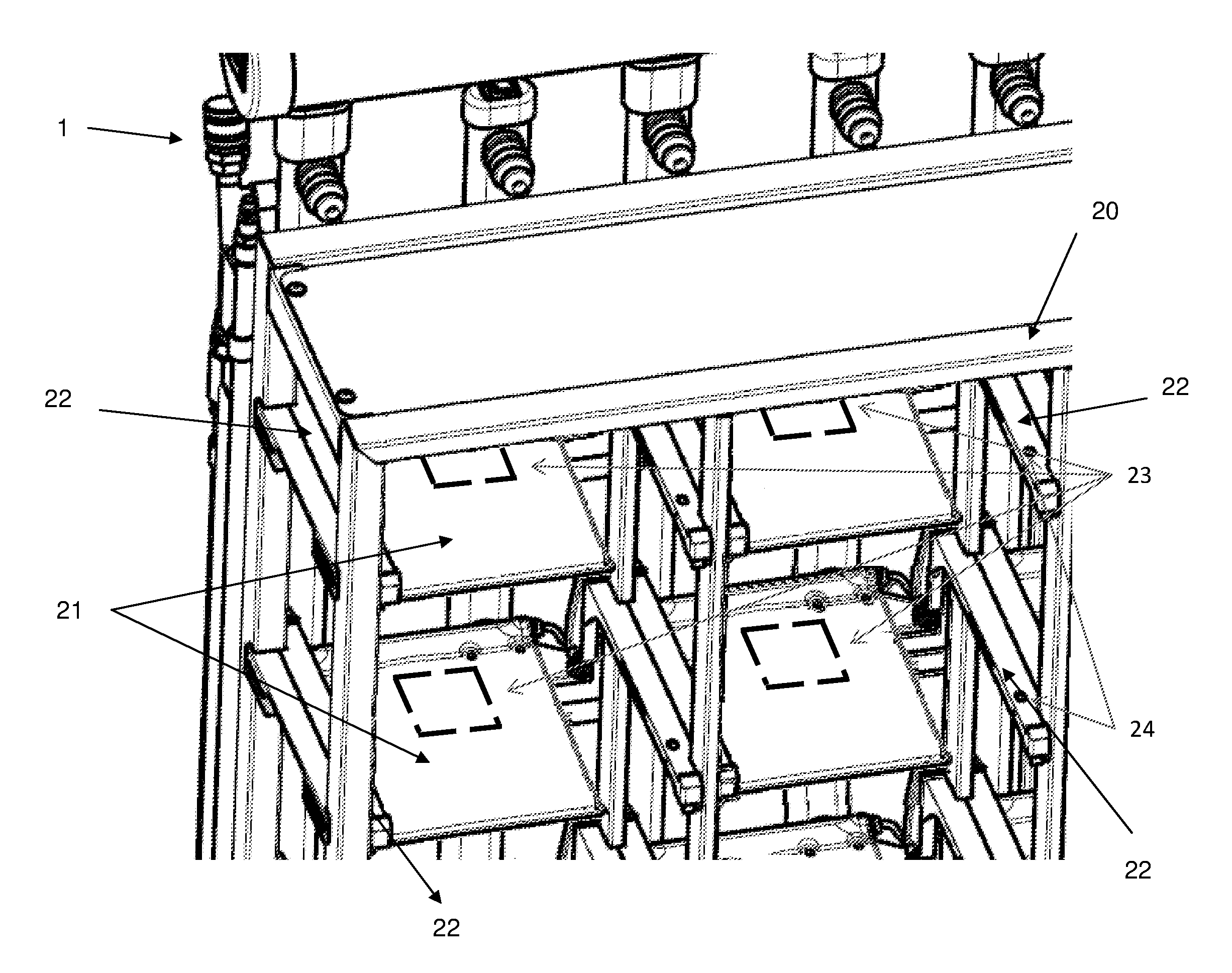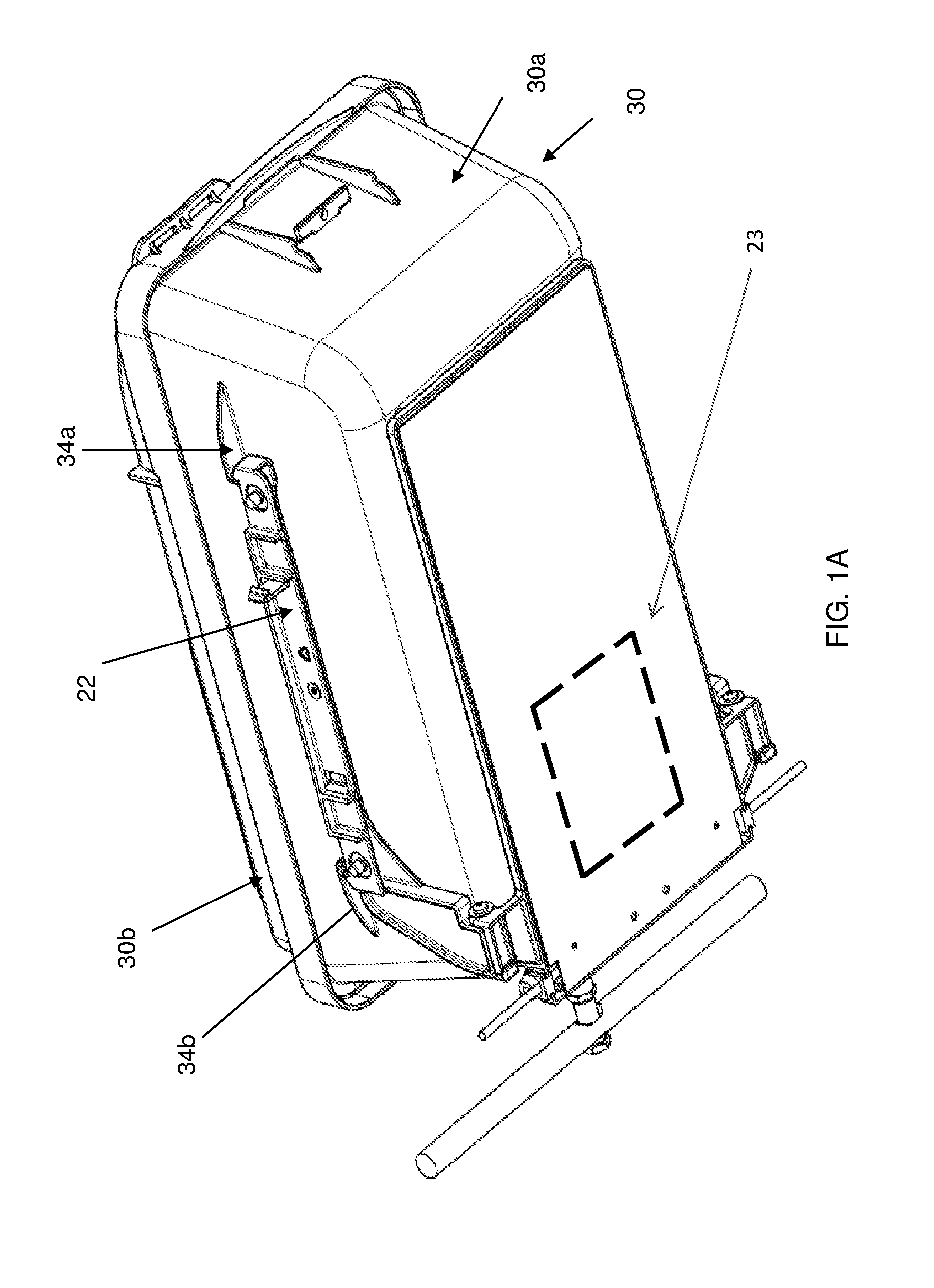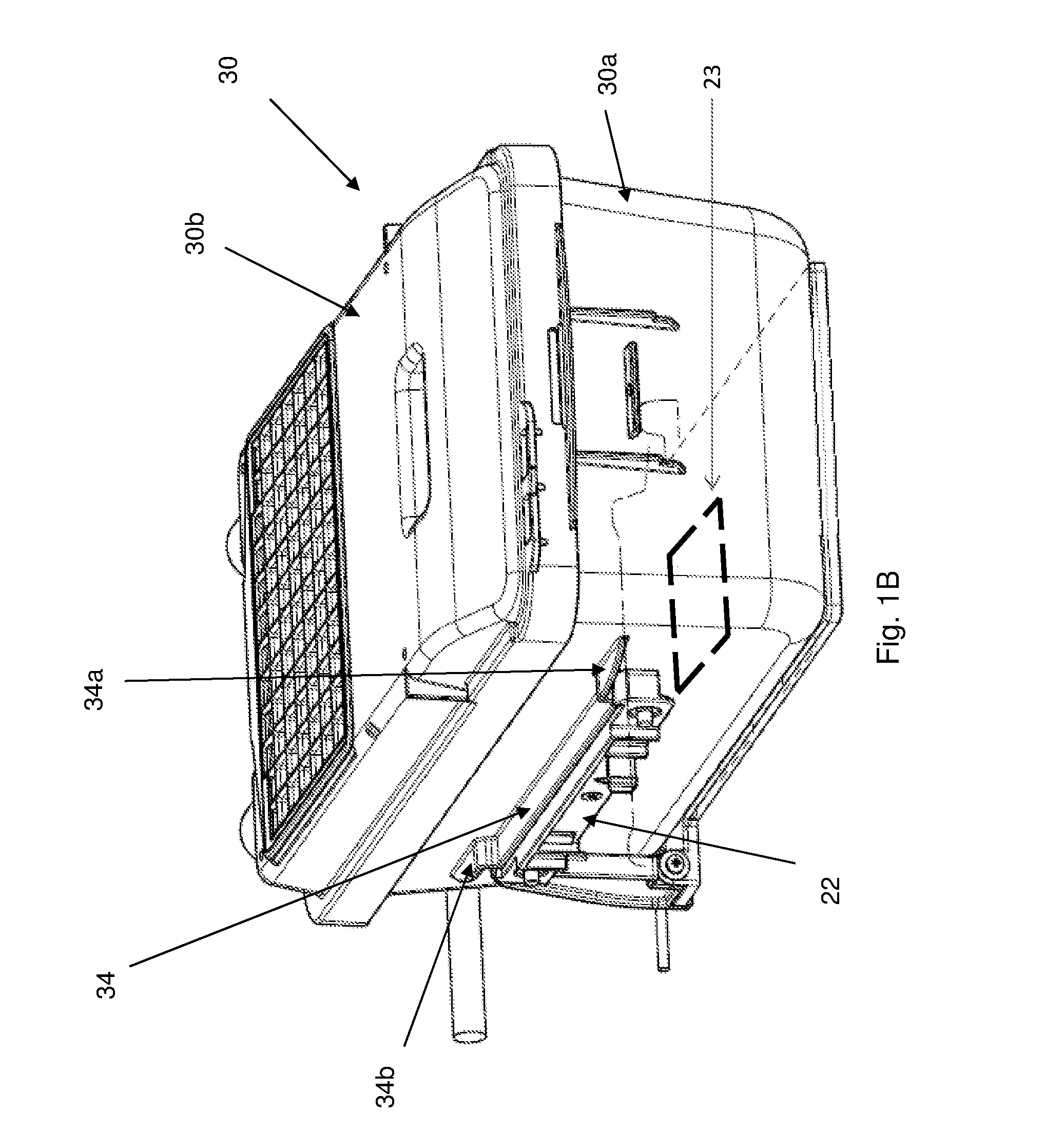System and method for automatically detecting the presence of cages in the shelf of a facility
a technology of automatic detection and cages, which is applied in the field of automatic detection of the presence of cages or trays, can solve the problems of wasting time and resources, calculating the number of days that the researcher's cage occupies the shelf, and not being easy to visual check the space available on the shelves by the operator
- Summary
- Abstract
- Description
- Claims
- Application Information
AI Technical Summary
Benefits of technology
Problems solved by technology
Method used
Image
Examples
Embodiment Construction
[0090]According to a first embodiment of the system 1 according to the present invention, it comprises a shelf 20 defining a plurality of seats or cage positions 21 each of said cage positions comprising a pair of guides 22, substantially horizontal and parallel to each other, designed each to support one side of a cage 30 when this is inserted into the cage position 21.
[0091]Each of said seats or cage positions 21 also comprises an RFiD sensor 23 capable of reading an RFiD TAG 33 positioned on a cage 30.
[0092]More in particular, the RFiD reader 23 mounted on the shelf is positioned in the lower area of each cage position 21 so that it is arranged below a cage 30 and is located in the area of the filter 32 of the underlying cage 30 in order to read the adhesive RFiD TAG 33a applied to the filter 32 of the underlying cage.
[0093]Each cage 30 comprises a basin 30a and a cover 30b. According the prior art, the cages 30 in question also comprise, inserted in a specific seat created in th...
PUM
 Login to View More
Login to View More Abstract
Description
Claims
Application Information
 Login to View More
Login to View More - R&D
- Intellectual Property
- Life Sciences
- Materials
- Tech Scout
- Unparalleled Data Quality
- Higher Quality Content
- 60% Fewer Hallucinations
Browse by: Latest US Patents, China's latest patents, Technical Efficacy Thesaurus, Application Domain, Technology Topic, Popular Technical Reports.
© 2025 PatSnap. All rights reserved.Legal|Privacy policy|Modern Slavery Act Transparency Statement|Sitemap|About US| Contact US: help@patsnap.com



